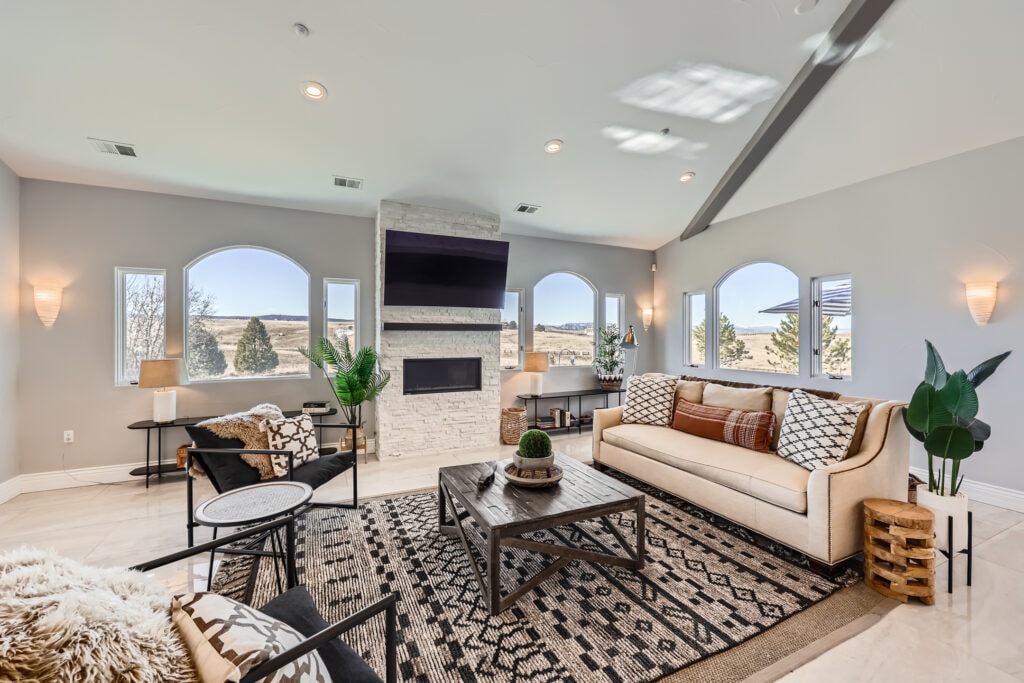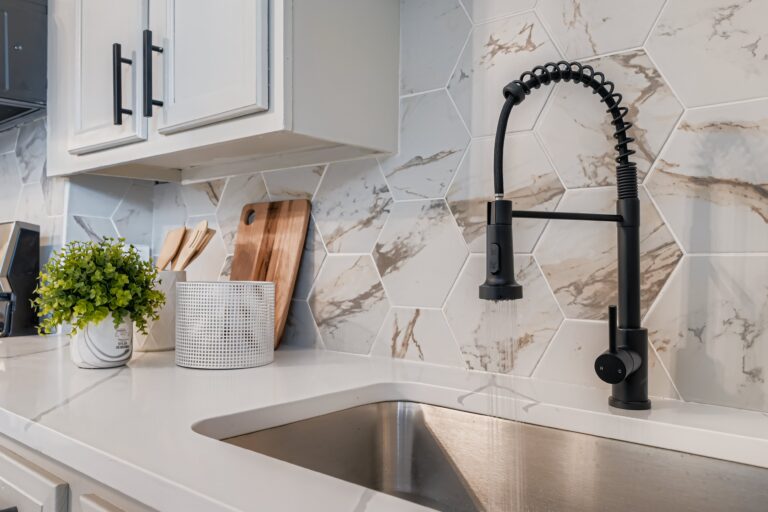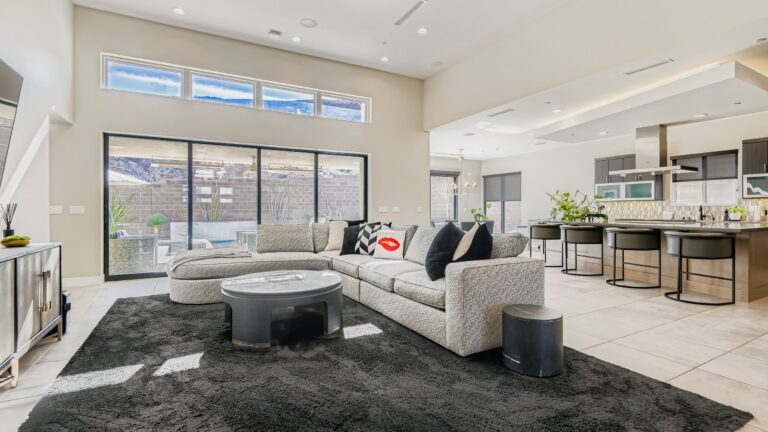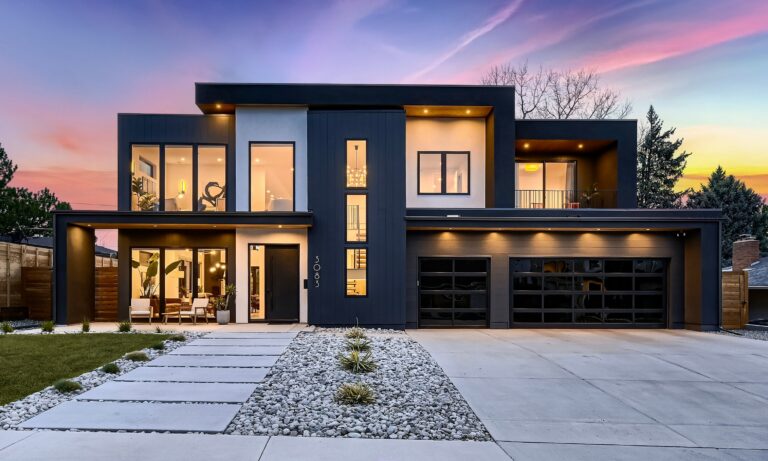There are several ways to help your listing stand out on real estate listing sites, including professional real estate images, a 3D virtual tour, and an intriguing listing description. When you publish a new listing on the MLS and third-party sites, your clients expect their homes to generate buyer interest.
Here are some tips on how to capture buyer attention by turning your listing description into a story.
Make an impression on buyers
Buyers first see a thumbnail of the featured image when browsing through listings. The first image typically highlights the exterior of the home. After a buyer reviews the listing’s thumbnail, pricing, and quick property stats, the goal is to get them to click through to the listing page.
Creating a standout listing page
The listing page is where your real estate marketing shines. On the main listing page, whether viewed on a third-party listing site or a single listing website, like the Virtuance Marketing Suite, you should include everything that helps convince a serious buyer to schedule a showing.
While you can, and should, hire a professional photographer for real estate images and a 3d virtual tour, you may need to write a captivating real estate listing description yourself.
Build an intriguing narrative
A good listing description tells a story to help buyers imagine themselves living in the home. For example, if you want to talk about how the kitchen is spacious and has a lot of natural light, create a scenario.
Something like: On Sundays, wake up slowly and enjoy a freshly brewed coffee in your spacious gourmet kitchen. While natural sunlight fills your space through the large floor-to-ceiling windows, imagine making fluffy pancakes on your luxury range.
Use dynamic words to sell your real estate listing
If you feel like your description lacks some oomph, try adding scientifically proven words to help sell listings for more money. Zillow’s results from a real estate listing description study found that the following terms can boost a listing sale by 8.2 percent:
- Luxurious
- Stainless
- Beautiful
- Landscaping
- Granite
- Gourmet
- Curb appeal
- Pergola
- Impeccable
- Upgraded
- Remodel
- Tile
- Maple
Of course, when you decide to incorporate some of these keywords into your description, make sure they are relevant to the listing.
Avoid these words in your real estate listing description
Just as there are perfect buzzwords for your listing description, there are also words that you should stay away from. In the same Zillow study, researchers found that the following words can negatively impact your listing price and days-on-market (DOM):
- Fixer
- TLC
- Nice
- Investment / Investor
- Potential
- Bargain
- Opportunity
In some circumstances, the words mentioned above may suit your description. Always remember who your audience is and consider running some A/B experiments. It may turn out that “fixer” works for you while it doesn’t work for other real estate agents.
Limit your adjectives
While creating a story-like real estate listing description is the goal, adding too many adjectives can come back to bite you. You want to paint a picture so people can easily imagine settling in; however, going overboard is a red flag for savvy buyers. When you use too many adjectives in your listing description, readers might assume you’re trying to distract them from reality.
Here is an example of a listing description with way too many adjectives:
This incredibly stunning and renovated mid-century modern home is pristinely upgraded throughout its large and roomy open-concept floor plan.
And here’s how to fix it:
This stunning home is ideal for those who want mid-century modern design elements but also upgraded finishes.
Leave out the basics
Save your limited listing description space for the details that matter. More likely than not, the listing’s number of bathrooms and bedrooms is in plain sight for viewers. The same goes for square footage and lot size.
Add a summary for seasoned buyers
It’s essential to include a section in your listing description that completely cuts out the fluff. While the real estate marketing strategy of creating a story-like listing description can win over several buyers, some buyers and agents only desire the fast facts.
For these reasons, you should place a TL;DR (too long; didn’t read) segment at the top of the listing description. This part can discuss property statistics, the listing’s layout, and any special features worth mentioning.
Complete your listing with Virtuance
The real estate market changes month-to-month from region to region. It is difficult to predict when your market will switch from a seller’s to a buyer’s market and vice versa. For this reason, it is crucial to have a solid real estate marketing toolkit.
Your toolkit should always include a well-written listing description template that tells a story, professional real estate photography, an updated listing presentation, and a social media strategy. With these marketing techniques in place, your real estate business benefits.
FAQ
While there is no strict rule, an ideal listing description should be 150-250 words. It should be long enough to tell a compelling story but concise enough to keep the reader’s attention without making them move on without finishing reading.
If your listing isn’t generating interest within the first few weeks, it might be time to update the description, swap out photos, adjust the price, or refresh your marketing strategy. A/B testing different descriptions or images can also help determine what works best.
Beyond descriptions and images, you can use targeted social media ads, video tours, email marketing campaigns, open houses, and staging techniques to attract buyers. Networking with local real estate agents and utilizing online listing enhancements, such as premium placements, can also increase visibility.








